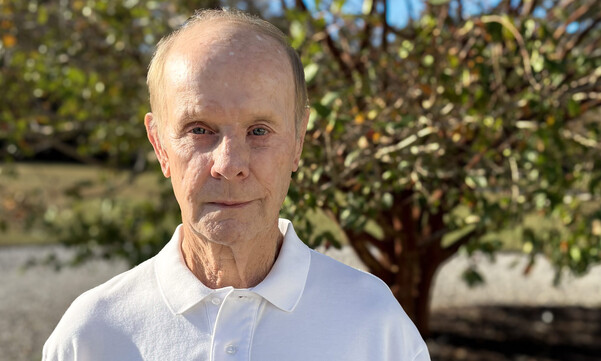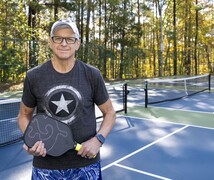For six months, Elizabeth Ann Badgett, of Clayton, NC, watched a painless, scaly spot appear and disappear on her nose. Each time the spot returned it was larger until it reached the corner of her left eye. Her primary care doctor referred her to a dermatologist, who diagnosed the spot as skin cancer.
There are three predominant types of skin cancer: basal cell skin carcinoma, which is the most common, squamous cell carcinoma and melanoma. Badgett, 62, was diagnosed with basal cell skin cancer. It had to be removed.
Duke dermatologic surgeon Dr. Jonathan Cook, MD, performed Mohs surgery, the most effective way to remove basal cell and squamous cell skin cancer. In the process, he had to remove a large area of tissue on her lower eyelid, cheek, and nose that extended to layers deep against the bones. Badgett needed reconstructive surgery to improve the function and appearance of her eye and face.
Oculofacial Plastic Surgeon Protects Vision, Improves Appearance
“I knew the surgery was necessary, but I was scared because of the cancer’s proximity to my eye,” said Badgett. “I wondered if my eye and face would ever look normal again.”
Badgett was referred to Duke oculofacial plastic surgeon Dr. Julie A. Woodward, MD. Because Woodward is also an ophthalmologist, she was able to develop a reconstruction strategy that would protect Badgett’s vision as well as improve her appearance.
“The reconstructive surgery not only maintains eyesight, but it also gives people a more normal appearance, helping them live their daily lives,” said Woodward.
During reconstructive surgery at Duke Eye Center, Woodward lifted a flap of skin from Badgett’s forehead and rotated it to cover the incision site from her Mohs surgery. It was a delicate procedure that required Woodward to carefully connect the skin flap to blood vessels in the new location. Without adequate blood flow, the repositioned skin would not survive. Woodward later performed the second stage of the surgery to complete Badgett’s reconstruction.
Post-surgery Techniques Enhance Results
Woodward noted that there are other techniques that can help improve appearance after reconstructive surgery. “To reduce puffiness, smooth out the transplanted skin and recapture a natural color, surgeons can inject either steroids or anti-inflammatories under the skin,” Woodward said. “Facial fillers can reduce the appearance of scars and also make eyes appear fuller over time.”
Today, Badgett’s cancer is gone and the surgery site is healing well. “I’m pleased that I was sent to Duke for this surgery,” Badgett said. “Dr. Woodward did a great job. I am happy with the results.”






